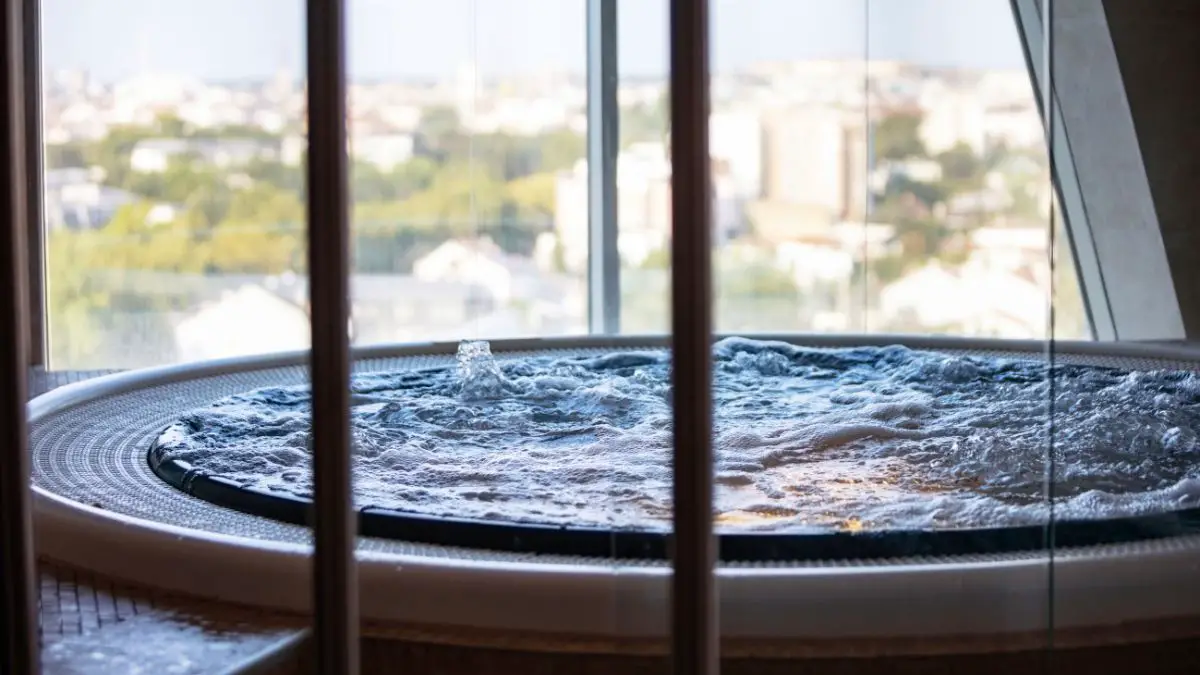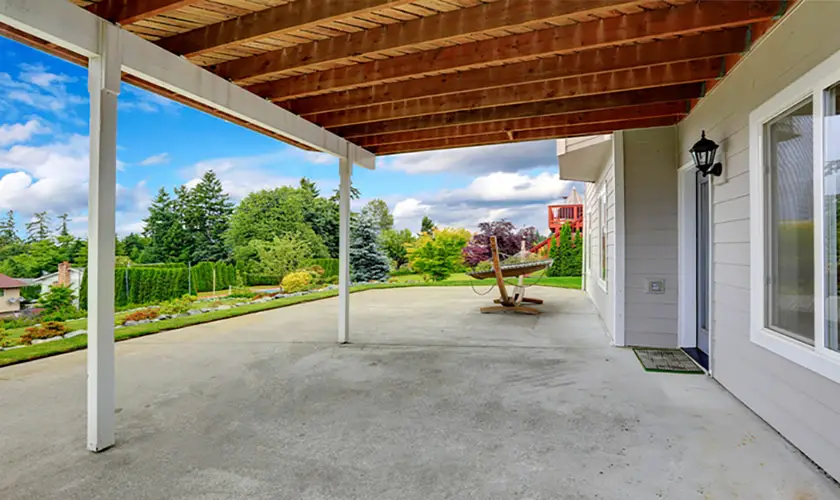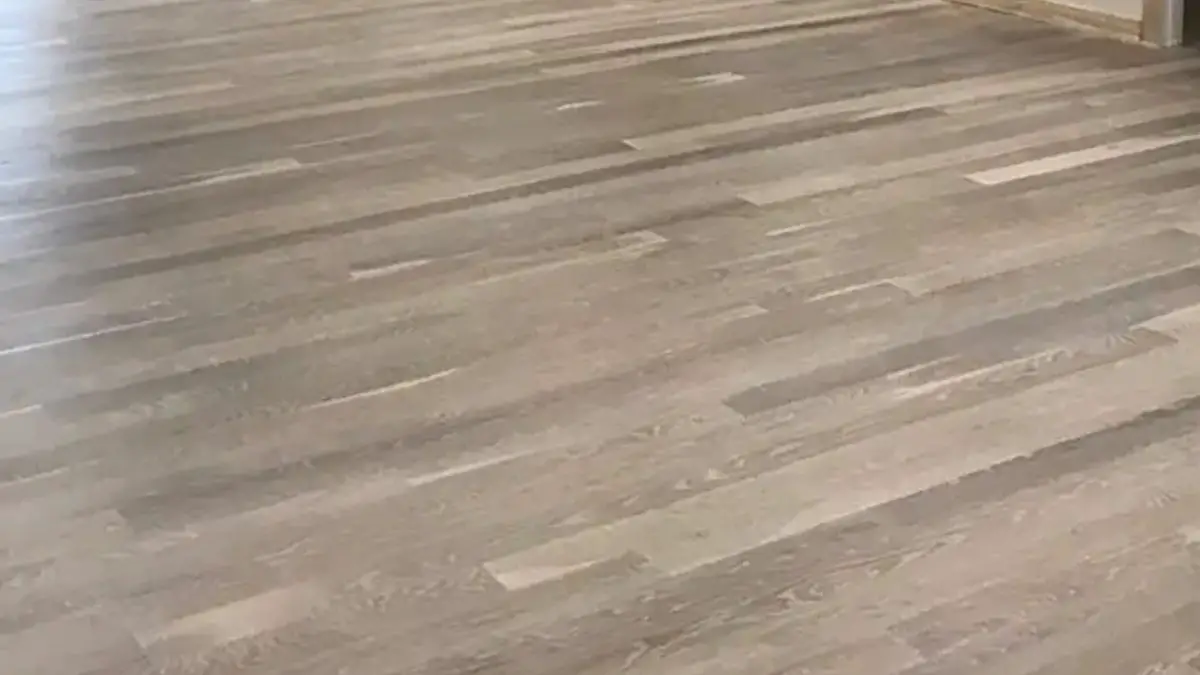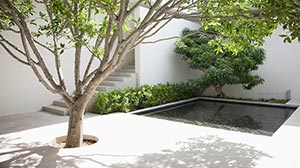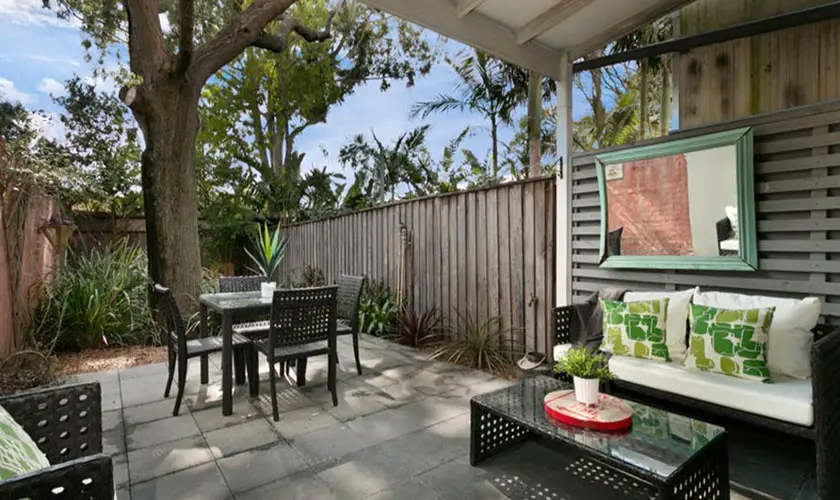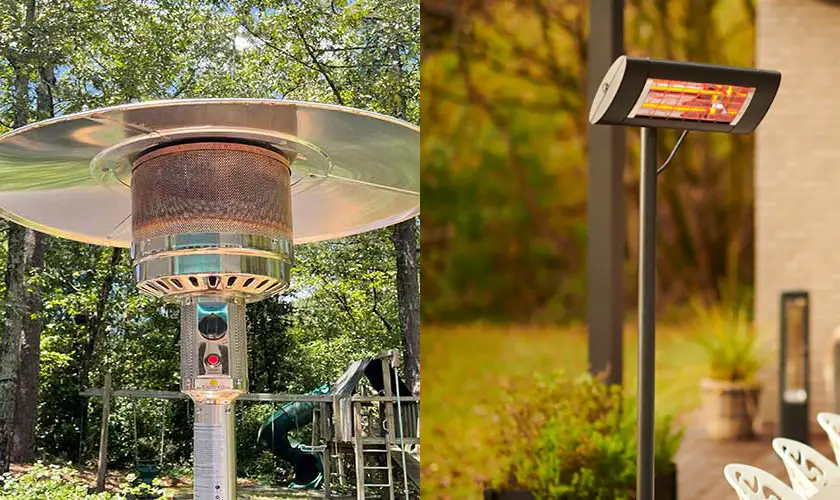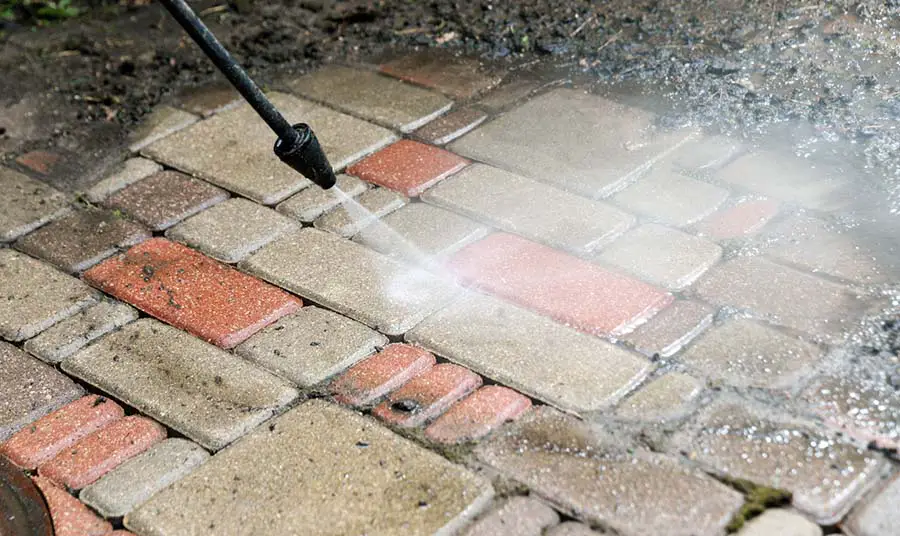
Mold usually occurs in damp areas where this isn’t much sunlight. This fact is important because large mold growths on your concrete or paver patio could lead to more extensive safety and health issues down the line.
For instance, if the mold grows or thrives on your concrete or paver around your homestead, you should always restrict your children and pets from accessing such mold-infested areas until you have the mold removed. Therefore, how do you remove mold from your concrete or pavers? Keep reading to discover more.
Ways to Remove Mold from a Concrete or Paver Patio
It is vital to wear protective gear whenever you are removing or getting rid of the mold from your concrete patio. The protective gear includes a dust mask, rubber gloves, protective clothing, and shoes. This enables you to avoid getting in direct contact with the mold.
There are a variety of methods that you can use to remove or get rid of the mold. For instance, you can use methods such as:
- The hose cleaning method
- The bleach solution method
- The pressure washer method
- The vinegar method
1. Clean the Mold Off With a Hose
To use this method, you should do the following steps:
- Collect the big debris. These include leaves.
- Vacuum out the dust from paver patio joints.
- Make a mixture of mild liquid soap and water.
- Pour the mixture of the surface that is infested by mold.
- Give it a few minutes, and then move on to give the paver and concrete patio thorough scrubbing using a hand bristle brush.
- Rinse your concrete using your garden horse and cleaning solution. This allows you to get rid of the dirt debris.
- Allow the cleaned area to dry.
- Check to confirm if any stains are remaining.
2. Use Bleach to Remove Mold
The bleach solution is powerful in getting rid of surface stains, algae on the paver patio, mold, and concrete.
Before you begin to use this bleaching solution, you need to make sure that no adjacent grass and plants may get affected by the bleaching solution.
It is important to note that this bleaching solution can cause dizziness if inhaled and irritate your skin. Therefore, it is crucial to put on protective gear.
To use this bleaching solution method, follow this step-by-step guide:
- Make a mixture of a gallon of warm water and a cup of bleach.
- Put this mixture or solution into a clean spray bottle.
- Spray the mixture directly on the mold.
- Leave it to stay there for about 15 minutes.
- Use a rigid bristle broom or deck brush to scrub the mold in a backward and forth motion thoroughly.
- Rinse the solution or mixture and remove dirt debris using a garden hose.
- Using a clean, dry towel or cloth, dry out any remaining water.
3. Use a Pressure Washer to Get Rid of Mold
The hot water pressure washer is a super ideal method that you can use to get rid of and remove the stubborn mold. Once you remove the dirt and other debris, you will be required to blast mold using hot water. To do this, you will need a power washer.
Hot water assists in killing fungi cells and other stubborn microorganisms. However, it is essential to be careful while using this method, especially in situations where other plants are present in the surrounding patio.
Once you have splashed the hot water, you will realize that the stubborn and sticky mold has become soft. As such, you will then be able to scrub the mold using a deck brush.
Besides, you can use a steam cleaner to kill the mold on hard surfaces.
Finalize this by replenishing the patio joint that your powerful jet water may have displaced.
4. Mix Water and Vinegar for Mold Removal
Did you know that you can use vinegar to kill mold on the concrete and paver patio? Vinegar is one powerful cleaner that you can use to soften tough stains. As such, they help contain the mold in your home.
For instance, if you apply vinegar on the mold, they kill the cells, and as such, they are a recommendable method that you should consider to clean your concrete and paver patio.
If you want to clean the mold, you need to mix water with white vinegar equally. Then apply the mixture to your concrete or paver patio.
On the other hand, if you wish to kill mold, you will only be required to put the full-strength mixture in a spray bottle and then spray it on the mold. It is vital to avoid diluting the solution.
After spraying, you will be required to allow the sprayed solution to stay on the concrete for about 15 minutes. After 15 minutes, you can then start scrubbing.
You should then rinse the solution or mixture and debris using a hose.
What is Mold and How to Remove it From Concrete
Before understanding how to remove mold from concrete or paver, you have to understand what mold is.
What is Mold?
Mold is defined as a fungus that generally grows and thrives mainly in a damp, humid environment.
They usually occur in a variety of colors. For instance, you might experience it in either of these colors:
- Black
- Purple
- Orange
- White
- Green
The mold grows and thrives mainly on walls, basements, bathrooms, HVAC systems, and floors in a moist environment.
For instance, molds are just like green algae. They like thriving on outdoor surfaces such as concrete patio floors, pavers, and decks. Therefore, you need to remove them.
Why You Need to Remove Mold
It is vital to note that mold typically produces harmless spores if they are in small amounts. However, if they occur in large amounts, they are very harmful.
It is vital to note that spores are airborne. They cause health-related problems to human beings and animals if they get inhaled.
The molds also spread quickly and give rise to severe stains on furniture, surfaces, and other fixtures. For instance, the surfaces affected by molds are usually slippery, dangerous, and hard to walk on.
Is Mold On a Concrete Patio Dangerous?
As discussed before, the mold is hazardous if left to grow at any place in your home or surrounding. For instance, they may both be harmful to either the family members of your household and the available pets or both.
A patio infested by mold will cause your bricks, concrete, and paver to appear very stained. For instance, mold is the common cause of what you might be noticing black spots on your driveway or the concrete patio.
Therefore, it is vital to remove or get rid of the mold before it spreads or matures. For instance, you need the help or assistance of a professional to remove a large section of the grown mold. Doing it by yourself may pose some danger to your body or health.
How to Keep Mold From Growing On Your Patio
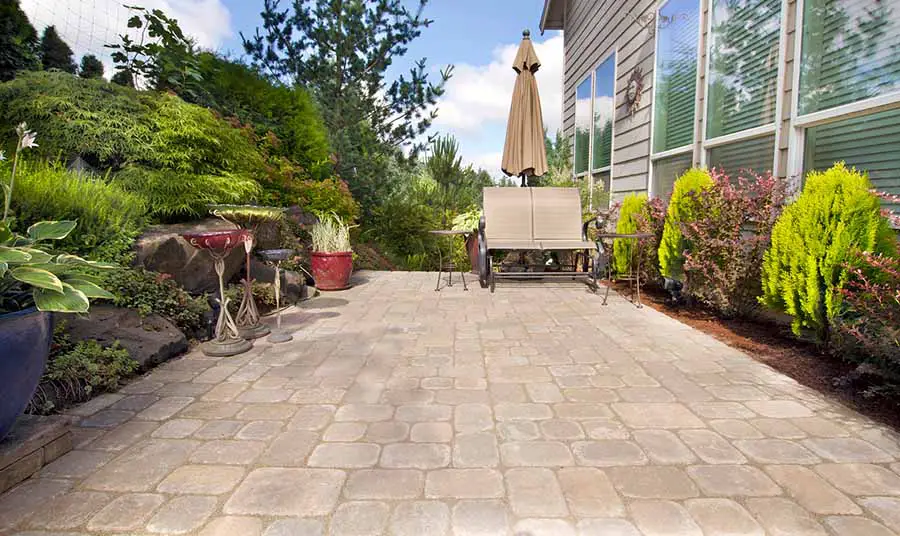
It is an undisputed fact that the concrete and paver blocks, bricks, and patio are very much vulnerable to mold infestation.
This is because they tend to attract or trap moisture. This moisture is one conducive condition or environment that encourages the growth and thriving of mold, algae, and moss.
Therefore, one of the most effective ways to keep mold off patio pavers is to make sure that your concrete and paver patio are kept clean and dry all the time.
How to Keep a Concrete and Paver Patio Dry
For you to keep and paver patio dry and clean, you need to do the following:
- Ensure that you regularly clean and dry your concrete and paver patio thoroughly. This will enable you to get rid of dirt and materials that supply the mold with food.
- Ensure that your concrete and paver patio is exposed to sufficient sunlight. For instance, the ultraviolet radiation rays from the sun assist in killing the mold. Besides, they drive out moisture conducive to the growth and thriving of mold from the tiny cracks.
- Try to use a dryer or fun heater to remove any element of moisture or water in the dark areas.
- You should use mold prevention products often. Such products include copper crystals and solutions.
- You should drain all standing water in the nearby surrounding. This helps by limiting the water or moisture absorption by the concrete and paver stones, bricks, or patio.
- You should prune all the overhanging branches of trees that are near the concrete and paver patio. Besides, you need to move all the furniture. Doing this will allow for sufficient sunlight onto the concrete and paver patio, bricks, cracks, and stones.
What is the Best Cleaner for Mold On Pavers
The best cleaner for dry and liquid application for concrete and pavers attacks the mold or stain from deep below the surface.
However, there are various factors that you need to consider to select the best cleaner for your concrete and paver patio.
Considerations When Selecting a Cleaner
Since there are many available concrete and paver cleaners, you will need to understand and have deep knowledge of each cleaner and how it removes the various types of mold and stain.
For instance, you need to know how various mold and stains operate, classified, and the type of cleaner that best cleans them. With this in mind, you are guaranteed to choose the best concrete and paver cleaner for yourself.
Some of the considerations that you need to make while selecting the best concrete and paver cleaner are:
- The type of stain. There are many different types of stains, and they all require different types of cleaners. For instance, there are biological stains such as mold, algae, and moss. Besides, there are those caused by hydrocarbons and solvents.
- The type of cleaner. For instance, the different cleaners work differently to remove stains. Besides, they react differently to separate concrete and paver.
- The form and concentration. For instance, it is essential to note that concrete and paver cleaners usually come in various forms, such as dry and liquid applications. The majority of liquid applications are suited to remove mineral and biological stains.
- The cleaning method. Just as there are a variety of cleaning products, the cleaning methods are also different. Therefore, consider going for a cleaning product whose method of cleaning is best suited for you.
- The cleaning product working time. We all know that cleaning is a process that takes some time. There are fast-stain-removal cleaners and those that take time. Therefore, consider going for the cleaner whose working time you are more comfortable with.
- The safety of the concrete and paver cleaner. For instance, you should always consider going for a concrete cleaner that is eco-friendly. That is to say, it should not pollute or pose any risk to the environment and your general health.
Can You Use Bleach to Remove Mold from a Patio?
The bleach solution is powerful in getting rid of surface stains, algae on the paver patio, mold, and concrete.
Before you begin to use this bleaching solution, you need to make sure that no adjacent grass and plants may get affected by the bleaching solution.
It is important to note that this bleaching solution can cause dizziness if inhaled and irritate your skin. Therefore, it is crucial to put on protective gear.
To use this bleaching solution method, follow this step-by-step guide:
- Make a mixture of a gallon of warm water and a cup of bleach.
- Put this mixture or solution into a clean spray bottle.
- Spray the mixture directly on the mold.
- Leave it to stay there for about 15 minutes.
- Use a rigid bristle broom or deck brush to scrub the mold in a backward and forth motion thoroughly.
- Rinse the solution or mixture and remove dirt debris using a garden hose.
- Using a clean, dry towel or cloth, dry out any remaining water.
What Removes Mold From Pavers?
There are various factors or products that can kill mold on concrete and paver patio.
For instance, you can kill mold on pavers by exposing the pavers to sufficient sunlight. Direct sunlight rays dry the moisture and water on the concrete and paver. As such, the mold will die due to a lack of favorable conditions for the growth and thriving of the mold.
Besides, other methods that you can use to kill mold on concrete and paver patio include:
- The hose cleaning method
- The bleach solution method
- The pressure washer method
- The vinegar method
However, it is critical to note that, for either of these methods to be successful, you need to follow the step-by-step guide of each.
Therefore, you will need to understand how to perform each method to adequately kill the mold on the concrete and paver patio, bricks, cracks, and stones.


